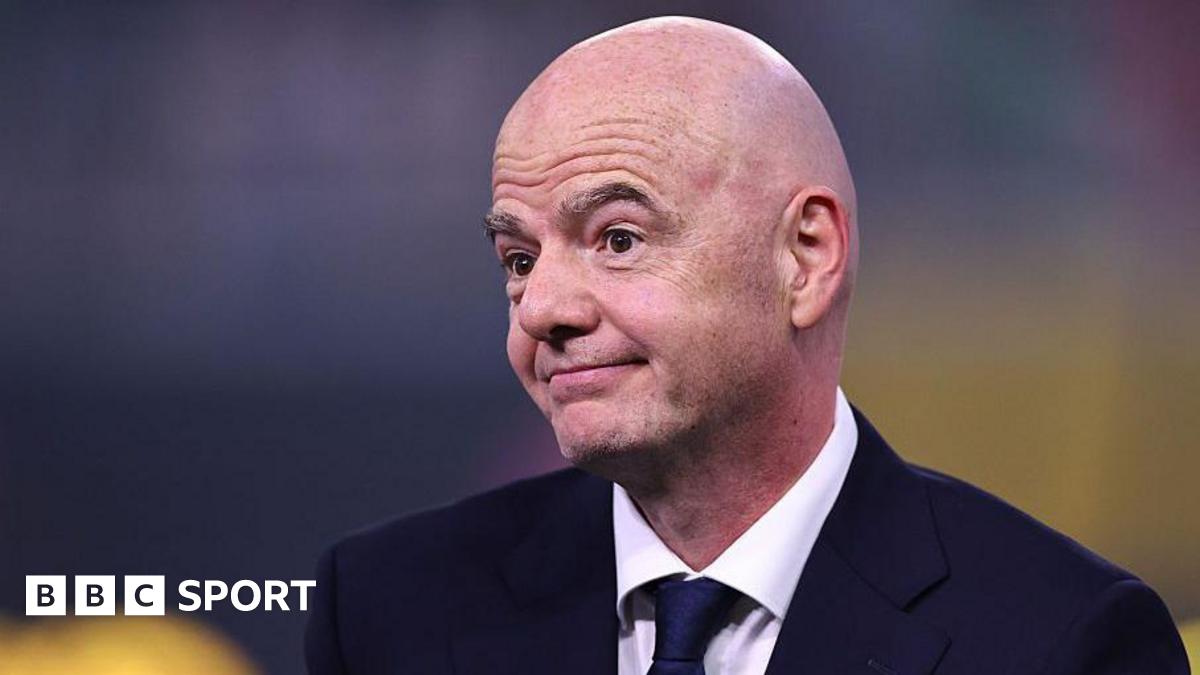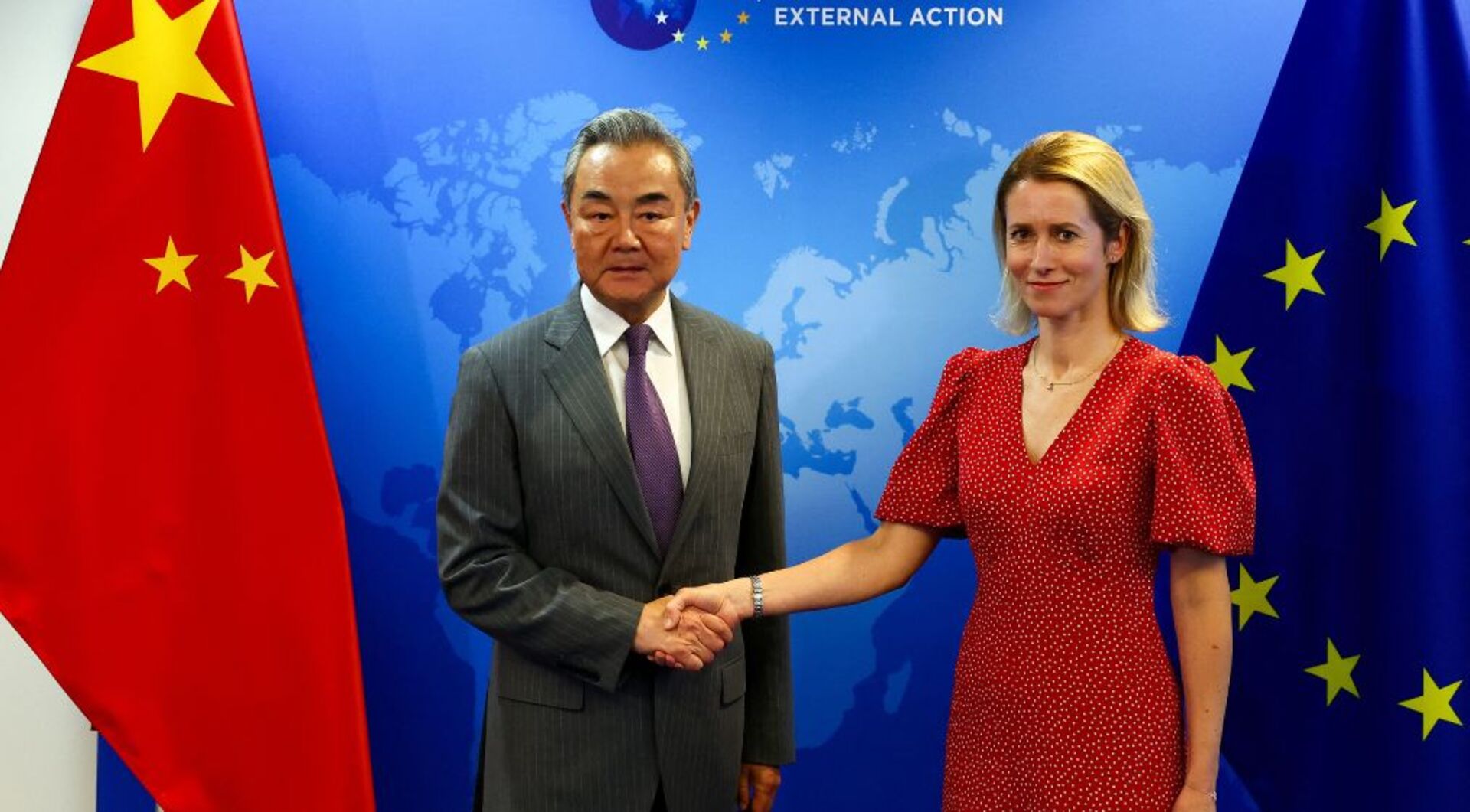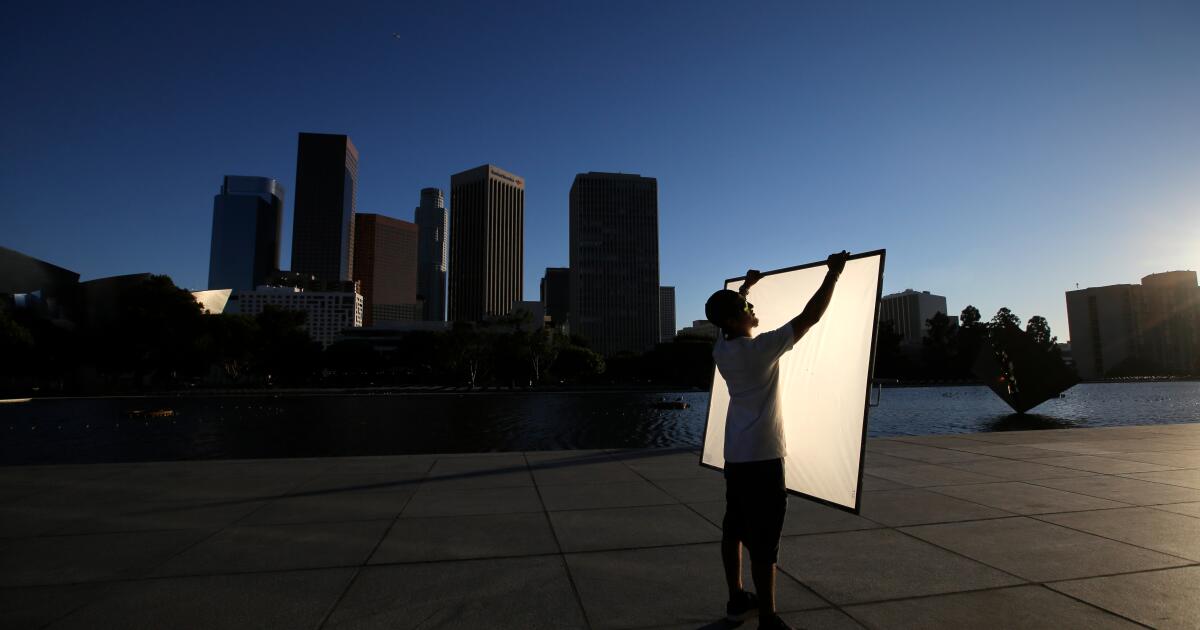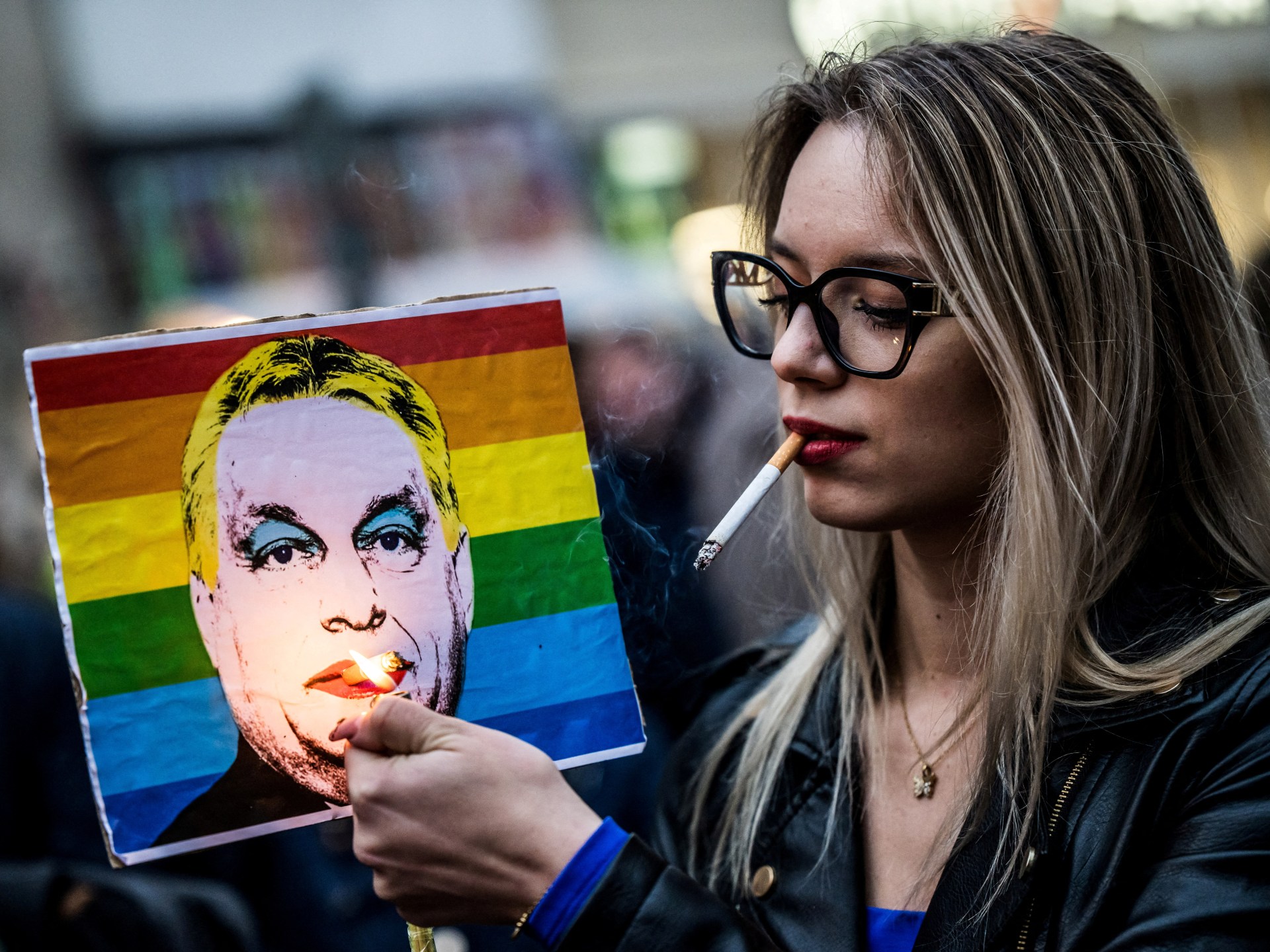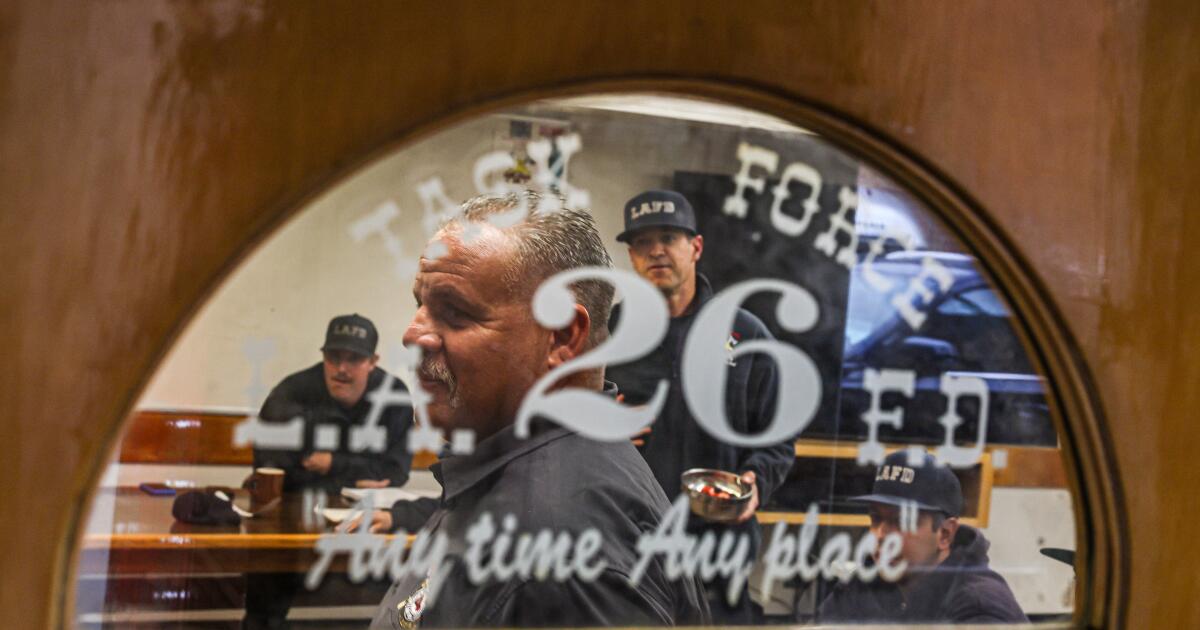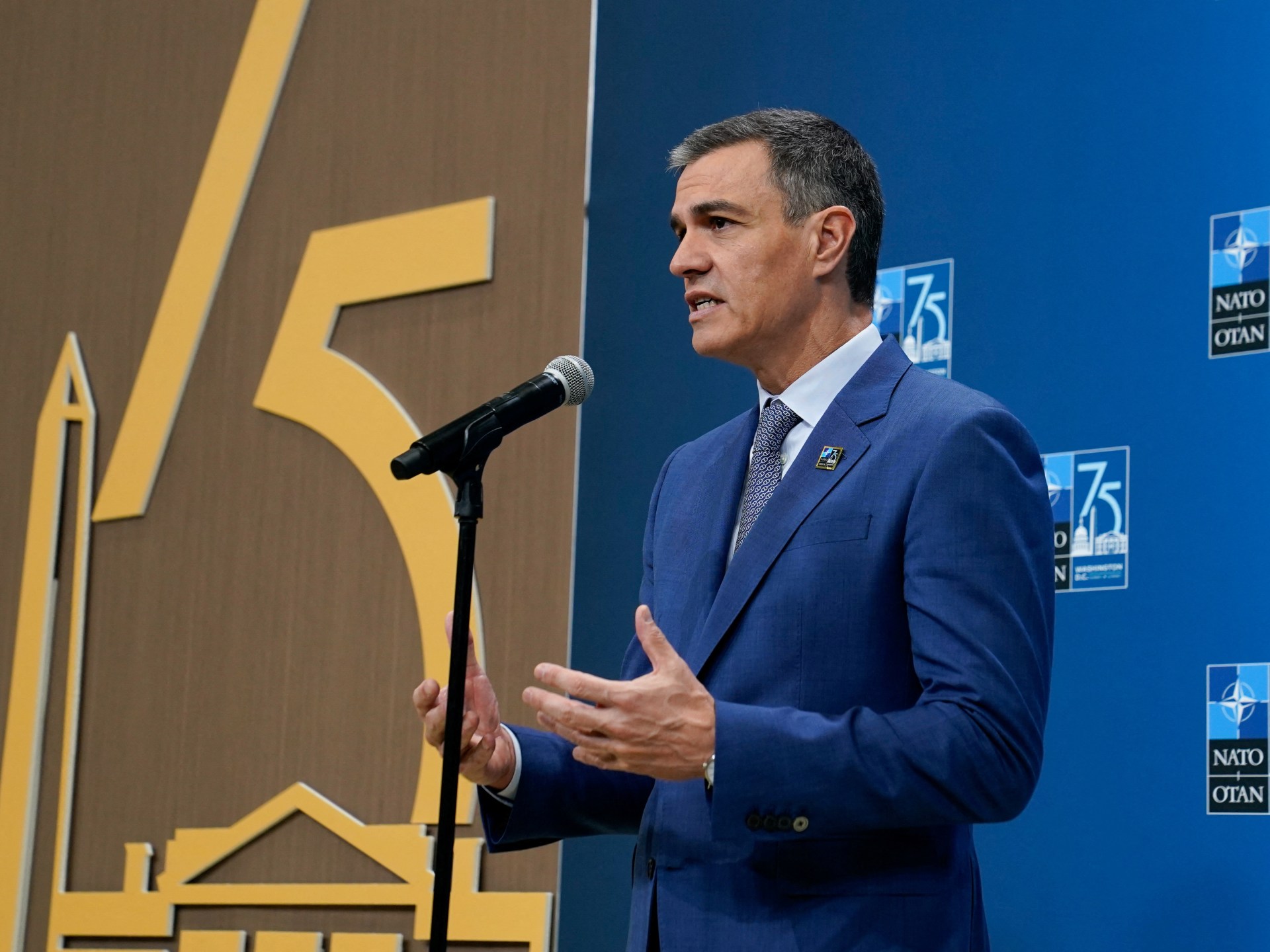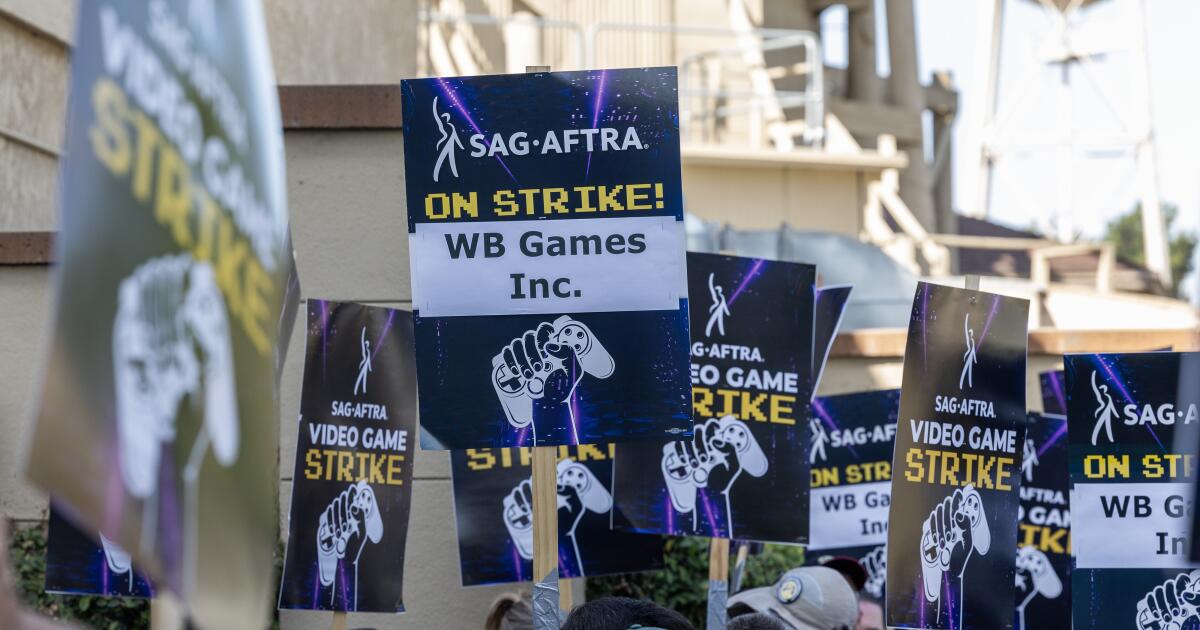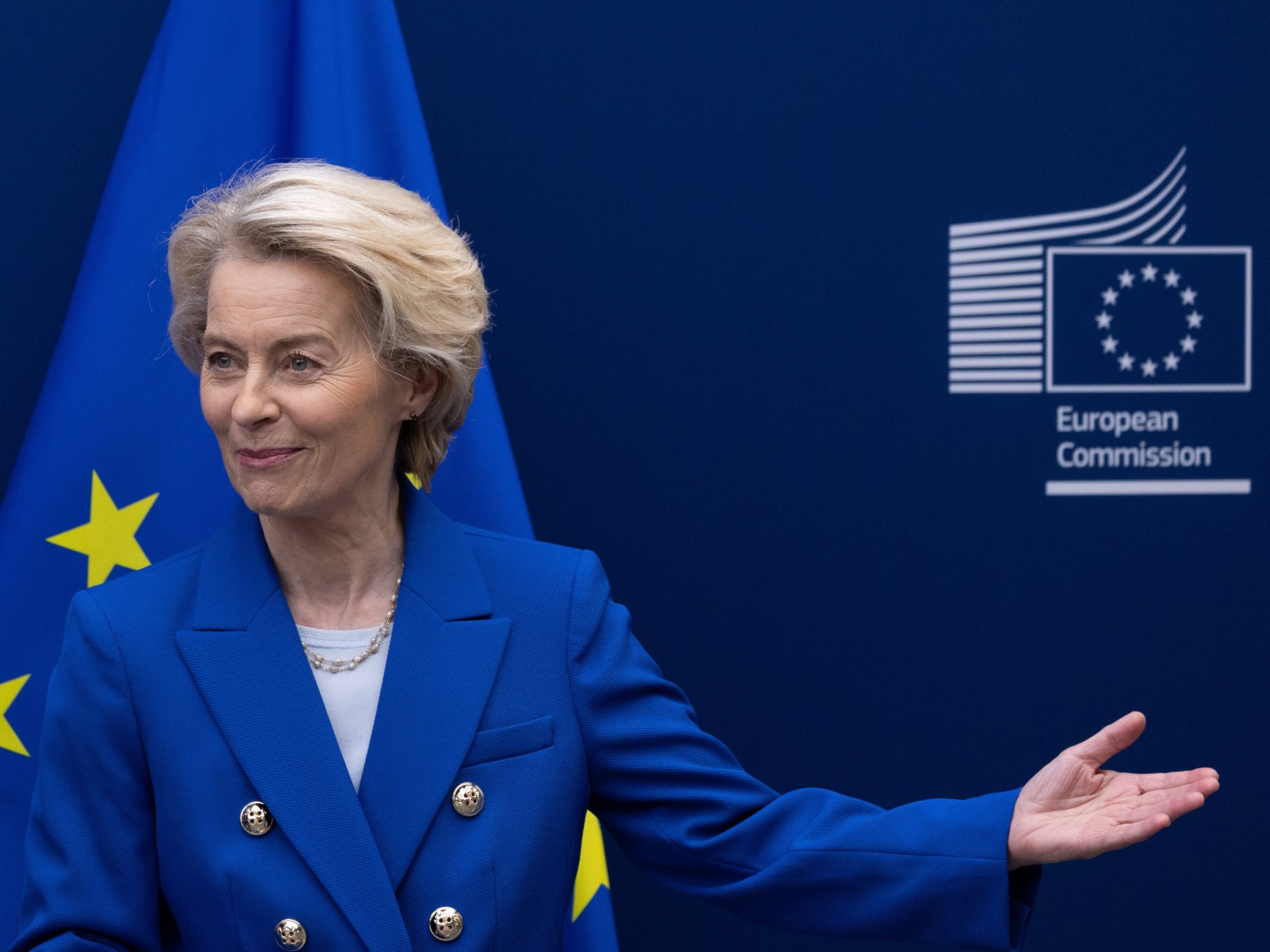EU demands more action from Israel on aid deal as strikes in Gaza continue | European Union News
EU foreign policy chief Kaja Kallas said the 27-member bloc was leaving the door open to action against Israel over its assault on the besieged and bombarded Gaza Strip if the humanitarian situation does not improve.
Kallas put forward 10 potential options on Tuesday after Israel was found to have breached a cooperation deal between the two sides on human rights grounds.
The measures range from suspending the entire accord or curbing trade ties to sanctioning Israeli ministers, imposing an arms embargo and halting visa-free travel.
Despite growing anger over the devastation in Gaza, EU states remain divided over how to tackle Israel, and there was no agreement on taking any of the moves at a Tuesday meeting of EU foreign ministers in Brussels.
“We will keep these options on the table and stand ready to act if Israel does not live up to its pledges,” Kallas told journalists. “The aim is not to punish Israel. The aim is to really improve the situation in Gaza.”
The meeting in Brussels came in the wake of the deal largely forged by Kallas and Israeli Foreign Minister Gideon Saar. Saar met with EU leaders on Monday after agreeing last week to allow desperately needed food and fuel into the coastal enclave of 2.3 million people who have endured more than 21 months of Israel’s deadly assault amid a crippling blockade.
“The border crossings have been opened, we see more trucks going in, we see also operations of the electricity network, but it’s clearly not enough because the situation is still untenable,” Kallas said.
Details of the deal remain unclear, but EU officials have rejected any cooperation with the Israeli-backed GHF over ethical and safety concerns.
Calls to end ties with Israel
European nations like Ireland, the Netherlands and Spain have increasingly called for the EU’s ties with Israel to be reassessed in the wake of the war, which has killed more than 58,000 Palestinians – mostly women and children.
A report by the European Commission found “indications” that Israel’s actions in Gaza are violating human rights obligations in the agreement governing its ties with the EU, but the bloc is divided over how to respond.
Public pressure over Israel’s conduct in Gaza made the new humanitarian deal possible, Dutch Foreign Minister Caspar Veldkamp said, adding, “That force of the 27 EU member states is what I want to maintain now.”

Kallas will update EU member nations every two weeks on how much aid is actually getting through to Gaza, Irish Foreign Minister Thomas Byrne said.
“So far we haven’t really seen the implementation of it, maybe some very small actions, but there’s still slaughter going on, there’s still a denial of access to food and water as well,” he said. “We need to see action.”
Spanish Foreign Minister Jose Manuel Albares Bueno said details of the deal were still being discussed and the EU would monitor results to see if Israel is complying.
“It’s very clear that this agreement is not the end – we have to stop the war,” he said.
There have been regular protests across the continent, including a small one on Tuesday outside the European Council, where the ministers were discussing the aid plan.
Dozens of protesters in Brussels called for more aggressive actions to stop Israel’s offensive in the largely destroyed Gaza Strip, where famine looms and the healthcare system is on the brink of collapse.
“It was able to do this for Russia,” said Alexis Deswaef, vice president of the International Federation for Human Rights. “It must now agree on a package of sanctions for Israel to end the genocide and for humanitarian aid to enter Gaza.”
Human rights groups largely called the EU’s actions insufficient.
“This is more than political cowardice,” said Agnes Callamard, secretary general of Amnesty International. “Every time the EU fails to act, the risk of complicity in Israel’s actions grows. This sends an extremely dangerous message to perpetrators of atrocity crimes that they will not only go unpunished but be rewarded.”
‘Moving towards the unknown’
Israel and Hamas have been engaged in indirect talks for two weeks over a new ceasefire deal, but talks appear to be deadlocked.
Qatar’s Ministry of Foreign Affairs said negotiations have not stopped but are still in the early stages, adding that Israeli and Hamas delegations are both in Doha.
Meanwhile, Israeli attacks across Gaza resumed on Tuesday, killing at least 30 people, including two women who were shot near an aid distribution point run by the controversial Israel- and US-backed GHF.
Gaza’s civil defence said on Tuesday that its “crews have transported at least 18 martyrs and dozens of wounded since dawn”, most of them following Israeli air strikes on the northern Gaza Strip, where Israeli forces have stepped up attacks in recent weeks.
On Tuesday, the army issued another forced evacuation threat for Palestinians living in 16 areas in northern Gaza.
Among them is Jabalia, a ravaged town where residents have been fleeing in fear and panic.
“People are using their cars and donkeys to evacuate the area, and all are moving towards the unknown; they don’t know where to go,” Al Jazeera’s Moath al-Kahlout said.
“They are also struggling with transportation as there is no fuel to move from here and other areas. So, the situation is very chaotic. Everyone living here is in a state of panic.”
One Israeli strike also hit a tent in Gaza City housing displaced Palestinians, killing six people, according to the civil defence agency.
In the southern area of Rafah, two women were killed by Israeli fire near an aid distribution point, the agency said, adding that 13 people were wounded in the incident.
The United Nations said that at least 875 have died trying to access aid in Gaza since late May, when the GHF began operating.
Meanwhile, health teams in Gaza for the UN aid agency for Palestinian refugees (UNRWA) have warned that malnutrition rates are increasing, especially since the Israeli siege was tightened more than four months ago.
According to UNRWA Commissioner General Philippe Lazzarini, one in 10 children screened is malnourished.
In a statement, the group called malnutrition in the Strip “engineered and man-made”.

